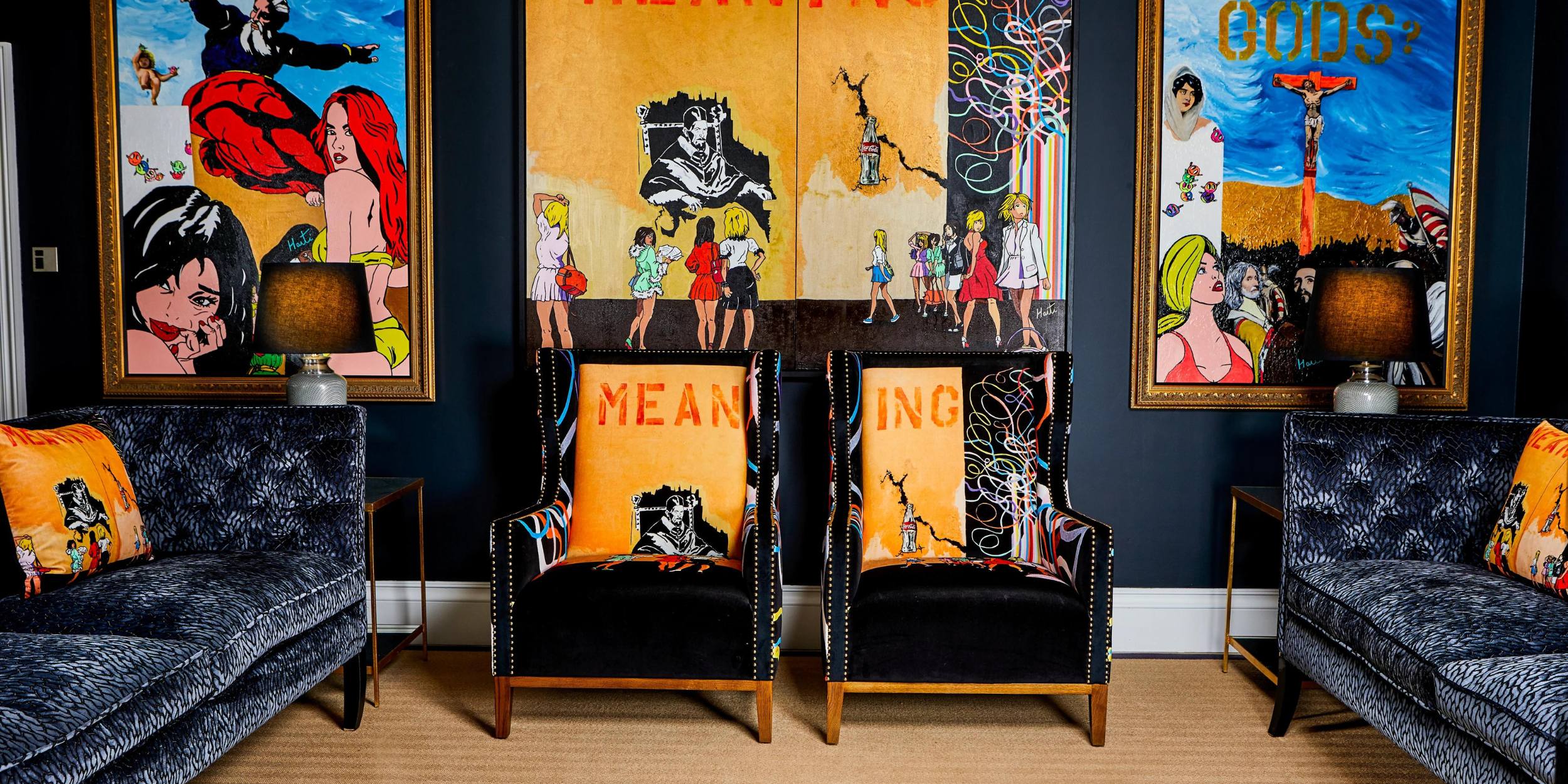HartiSWIM specialises in wearable art and furniture inspired by hand-painted prints created by the iconic artist Harti.

Harti is redefining sustainable luxury with its unique fusion of art and interior design, offering a stunning range of home furniture pieces that are both functional and artistic. Each item in the collection is thoughtfully crafted with sustainability in mind, featuring bold, statement designs that transform living spaces into curated art experiences. From intricately designed tables to striking chairs, Harti’s furniture combines aesthetics, creativity, and environmental responsibility.
In addition to their home collection, Harti has expanded into the world of fashion with new luxury sustainable fashion house HartiSWIM, created by proud Scottish entrepreneur Tessa Hartman and her daughter, global music star Talia Storm. HartiSWIM is making waves in the global swimwear and resort wear industries, specialising in wearable art inspired by hand-painted prints designed by Tessa’s husband, the iconic artist Harti.
HartiSWIM’s new collection features stunning women’s and men’s swimwear and resort designs, all crafted from sustainable materials like recycled plastic bottles. The brand recently headlined the Ibiza Fashion Festival, showcasing their luxury sustainable swimwear on a global stage.
By connecting the worlds of art, music, and sustainable fashion, HartiSWIM is more than just a swimwear brand—it’s a movement towards eco-conscious luxury.
Well, once the question has been set in stone, my white nights will bring tribulations, headaches and dehydration, to say the least. I start seeing Caravaggio’s, Tintoretto’s, details of a Velasquez, a laughing page boy from Giorgione or a woman draped in a beautiful coat with a mink collar from Parmigianino, maybe a voluptuous nude by Rubens before stopping at Titian’s portrait of Pope Paul III.
Images are flying through my brain windings—I will have a monochromatic outline of my work in progress. Now that said, I start going into detailing and colouring. I am still old school and I work with under layers, and all sorts of layers of the Tenebrist era. Back to Caravaggio, de Ribeira and a bit of the Flemish Baroque.
Once I dealt with the vintage aspect of my art, I started introducing the vibrancy of pop art, the hyper fauve. One cannot miss my love for women, their curves, and their eroticising shapes, gifted to us mortals by the Greek Gods. A life without a woman would be barren, right? History without women would have been one-dimensional, right? Even in religion, a paradise without Eve is unthinkable, right? In art history, the beauty of art has been shining through the representation of female characters, whether as Madonna’s, Nuns or Courtesans.
Botticelli would agree. The crux of the matter is that I could get on and on because it is impossible to complete a work. To me, it is always in progress. The reason is simple. A work of art is, at one point, taking on a life of its own, and by doing so one sees a re-birth of the work of art itself or as Nietzsche would call it; the eternal recurrence.
Tessa Hartmann CEO HartiSWIM founder

Website: hartiswim.com
Founders: Tessa Hartman &
Instagram: @hartiswim
Location: UK